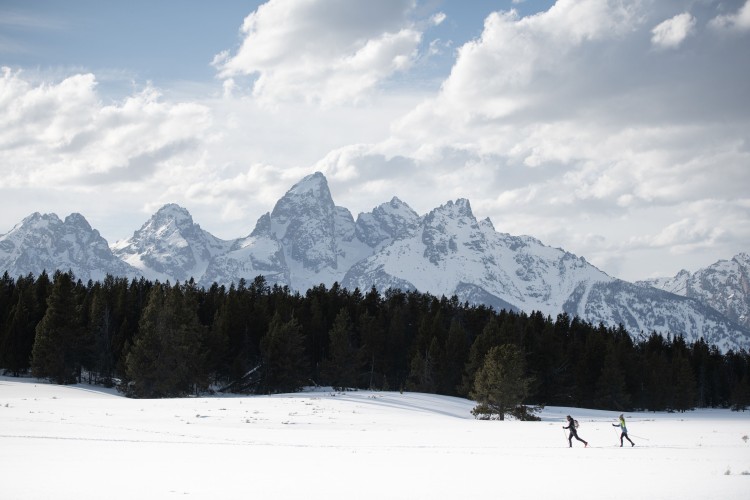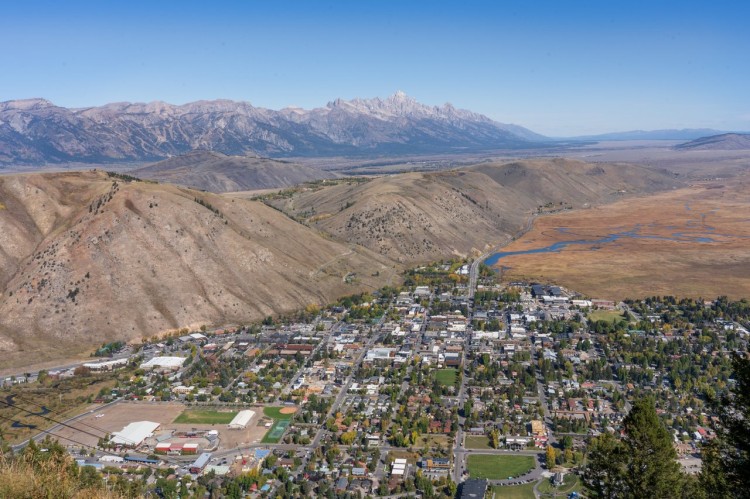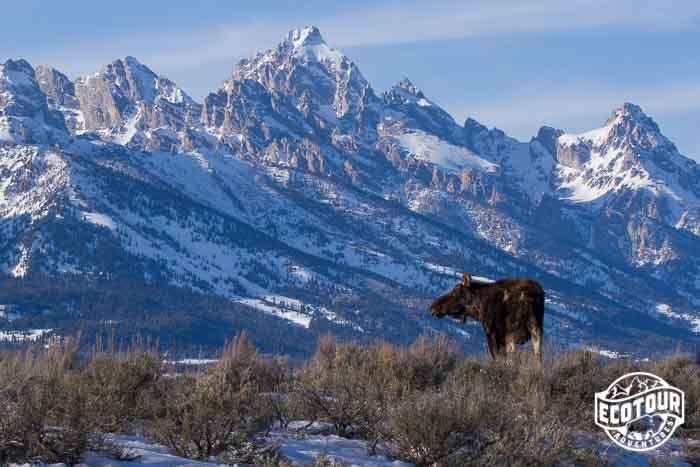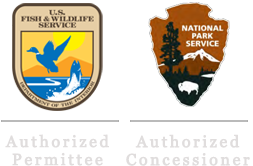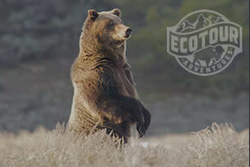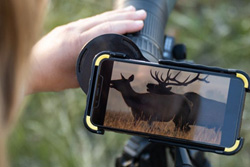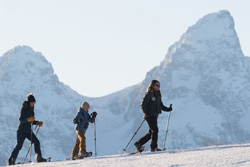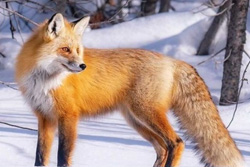Grizzlies in the Greater Yellowstone Ecosystem Beat the Odds
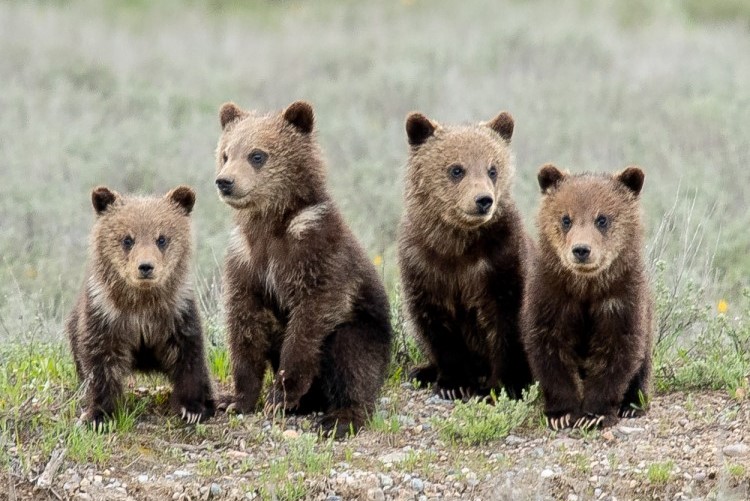

Grizzly 399 and COY - Since she was first observed this year with four cubs on May 18th, 2020 Grizzly 399 has been a frequent sight in Northern Grand Teton National Park. Photo by EcoTour Adventures owner Taylor Phillips.
She doesn’t know it, but the now 24-year-old Grizzly 399 is one of the most famous bears in the world. When she was collared and given the collar number 399, she was no different than any other bear in the Greater Yellowstone Ecosystem (GYE) but she would soon change that.
For most of her life, Grizzly 399 has made the northern end of Grand Teton National Park her home, spending a lot of it close to the road, to the delight of hundreds of thousands of park visitors. This year, with 4 brand new cubs in tow, Grizzly 399 continues to beat the odds, there have been fewer than a dozen documented instances of quadruplets in wild grizzly bears within the GYE.
Today, the chance to see grizzly bears is a huge draw for visitors, but it wasn’t always this way. Just a few decades ago only a few hundred grizzly bears were left in the lower 48 states, the result of a decades-long concentrated effort by homesteaders, ranchers, and the US Government to tame the wildness out of the west by removing grizzlies, wolves, and other carnivores from the landscape.
How did we get here, to a place where the chance to see Grizzly 399 and her cubs draw visitors from all over the world? How did we get to a place where the Greater Yellowstone grizzly population is nearing carrying capacity, and bears are returning to haunts hundreds of miles from the protected landscapes of Grand Teton and Yellowstone National Parks? What does all this mean for the future for Grizzly 399 and bears in Yellowstone country and beyond?
Grizzlies in the Greater Yellowstone Beat the Odds
EcoTour Adventures Guide Verlin Carlton Stephens has seen a lot of Grizzly 399 over the years. “I was living at Colter Bay in Grand Teton, right in the middle of her territory so I saw 399 and other grizzlies frequently in the park.” Verlin spent his first year in Jackson Hole working for the Interagency Grizzly Bear Study Team as a biological technician. Formed in 1973, the goal of the IGBST has been to monitor and study grizzly bears across the Greater Yellowstone Ecosystem, providing science-based data to help guide the recovery and management of this iconic species.
Verlin and other technicians captured grizzlies in barrel traps, fitting the bears with VHF collars which would help tell the story of bears across the ecosystem. For Verlin, spending time with bears didn’t end there, however. “Being one of the trappers contributing to the research on these bears and then watching them as a photographer on my days off was special. All of my friends were on the Bear Brigade, so we spent the whole summer hanging out with bears. I hung out in bear jams all summer, it was all I did, just bears, watching.“
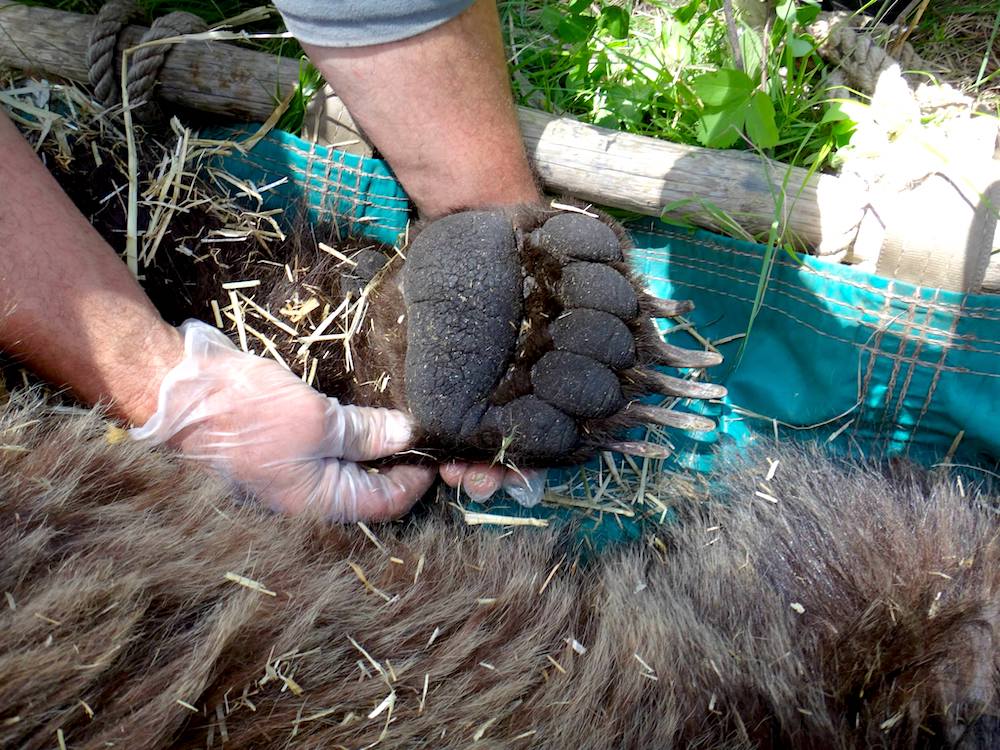
ETA Guide Verlin takes measurements of a tranquilized grizzly as part of ongoing research with the IGBST.
Verlin’s time with Grizzly 399 and other bears came after decades of recovery efforts to bring back an icon of wildness who had vanished from the vast majority of its historic range. Grizzlies are large aggressive carnivores and those encountered by early explorers were often shot. As European Americans moved westward throughout the 1800s, grizzlies were eradicated from the great plains, desert southwest, and northern Mexico. By the time Yellowstone National Park was founded in 1872, just a few hundred remained in isolated wilderness areas.
Grizzlies in Yellowstone would have likely met their end here as well if not for early park managers, including Superintendent Horace Albright finding them “cute.” Throughout the early 1900s, hotels, restaurants and other facilities in the National park would dump trash for the bears to feed on, attracting tourists who would watch the spectacle. Bears have extraordinarily sensitive noses and use their sense of smell to create a mental map of food sources they will return to for decades. By the early 1900s, the population was entirely dependent on these garbage dumps.
Feeding of both black and grizzly bears would continue through the 1960s, even as more members of the scientific and conservation community argued for managing Yellowstone to be as natural as possible. Removing this food source would be risky however. Grizzly Biologists John and Frank Craighead warned that closing dumps would lead to conflict from hungry bears searching for food and cause a population decline, but the Park Service moved forward with the plan.
The Craighead’s were right, by 1975 lethal management removal of “problem bears” and decreased reproductive rates had caused the population to decline to around 135 grizzlies left in Yellowstone, and it was soon listed as “threatened” under the Endangered Species Act. The long road to recovery of wild grizzlies was about to begin.
In the late 1970’s even seeing one single grizzly would be cause for celebration. Dan Wenk, recently retired Yellowstone Superintendent, worked in the park from 1979-1984 prior to taking the helm and observed “only 5 grizzly bears in the wild during that entire 5-year period.” Led by the scientific recommendations of the IGBST, agency managers shifted efforts to reducing areas of conflict, including a cessation of hunting, protection of habitat by limiting motorized access and livestock grazing, and reduction of food rewards from developed areas. The science-based strategy worked and grizzly populations began to rebound.
Roadside Bears Return to Grand Teton and Yellowstone
The roads of Yellowstone and Grand Teton National Park wind through an array of conifer forest, aspen groves, sagebrush flats, willow flats, and grassy meadows. These diverse habitats offer great opportunities to view the multitude of wildlife species that call the GYE home. As bear populations grew throughout the 1980s and 1990s, grizzlies started appearing in these roadside habitats where high-quality wild food was available.
Park rangers, concerned by potential conflict with people attempted to haze bears away from these areas, but these efforts largely failed, likely due to the strong lure of food combined with relative safety away from more dominant bears in other areas. Bears in Yellowstone and Grand Teton were learning to take advantage of quality roadside habitat by getting used to people, yet not associating them with food.
The Rise of Grizzly 399
Perhaps no other bear is as skilled at navigating the roadside habitats of Grand Teton National Park as Grizzly 399. She was one of the first to regularly use these areas and has since grown a crowd of avid followers hoping for the rare chance to see a wild grizzly in the lower 48 states.
Born in 1996, Grizzly 399 gained popularity in 2007 when she appeared with three cubs-of-the-year along the roads in GTNP. In response to growing crowds, NPS staff formed the “Bear Brigade” which helps manage people seeking a glimpse of 399 and other wildlife in the parks. The Brigade has a busy job helping visitors, whether viewing bears from a safe distance, preventing food handouts, or coning off sections of the road so bears can cross.
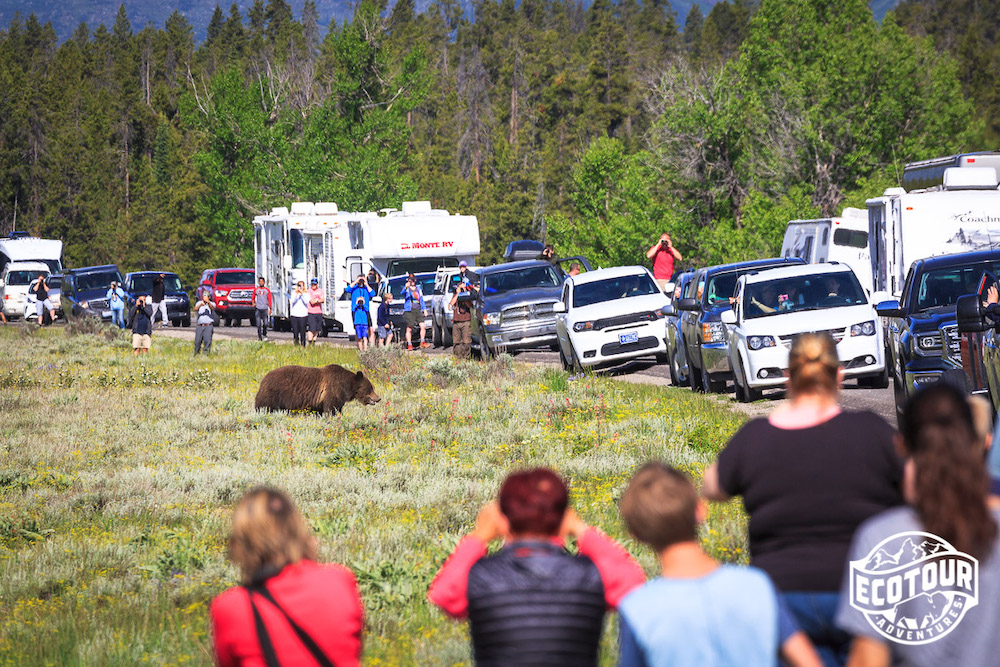
Grizzlies near the road can cause massive “bear jams” of hundreds of vehicles. - Photo by @joshmettenphoto
For most grizzlies, residing in close proximity to so many people would be problematic, which is why the vast majority of the GYE grizzly population lives in remote areas away from the potential for human conflict. Yet Grizzly 399 has become famous thanks to her ability to adapt to proximity with people and the dangers which come with it. Roadside wildlife in Yellowstone and Grand Teton serve as ambassadors for the vast majority of the animals who live in habitat far from roads and developed areas.
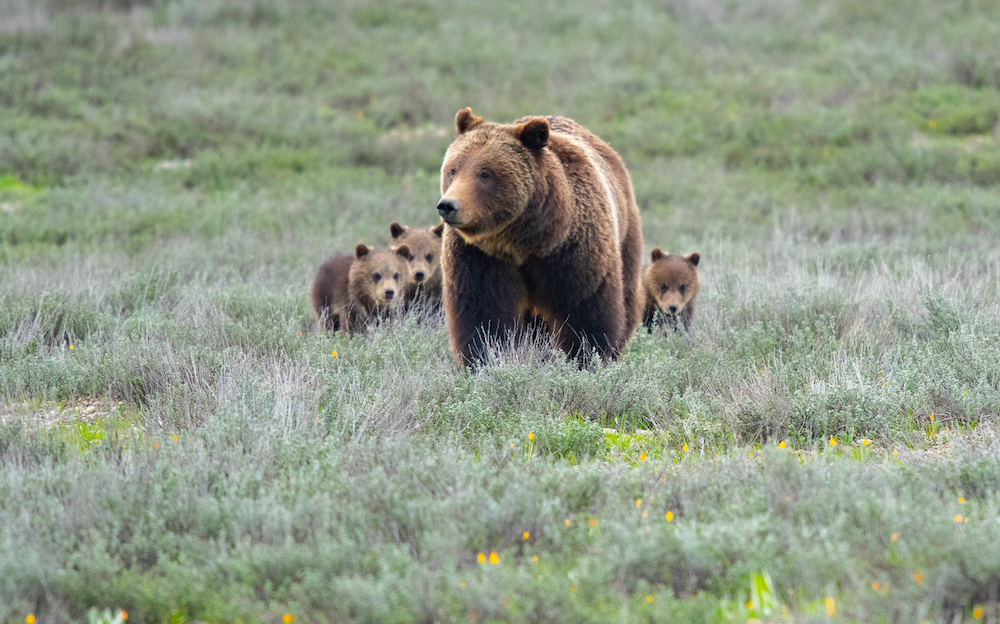
“There are so many bad outcomes that could have occurred with 399 living in a dangerous area. Somehow she has been able to navigate avoiding road collisions, food rewards, possible conflict with people in GTNP, hunters outside of the park, all while raising at least 17 cubs! A lot of people would say call it luck but I think she’s got it figured out, she’s smart and she’s defied the odds.” ETA Naturalist Verlin Carlton Stephens (Photo by @tetontay)
Females like 399 who frequently rear cubs are the most important segment of the grizzly population according to the IGBST. “Unique females with Cubs-of-the-Year” are population drivers, and if this population is growing than research shows that the rest is also growing. Each year, biologists perform ariel surveys of the GYE, counting grizzly moms with cubs. The Team has found that the majority of litters are 2 cubs, with 3 cub litters at 21% and 1 cub litters at 26%
As for Grizzly 399’s Quadruplets? Only about 2% of all documented litters achieve this milestone. It’s especially amazing considering that grizzly reproductive success usually declines as they age, not so it seems for Grizzly 399.
The Future of 399 and Grizzlies in the Lower 48
Today, Grizzly 399 and her four cubs are rambling in the same meadows of GTNP as her adult daughter, Grizzly 610, whose rambunctious yearling cubs race back and forth, wrestling amongst the fresh green grasses and wildflowers. None of these 8 bears is aware that Grizzlies in the GYE remain a federally listed Threatened Species. In the coming years, the bears will be delisted, and important management decisions will be handed over to the states of Wyoming, Idaho, and Montana.
Within Grand Teton and Yellowstone, somewhere around 200 bears roam, with over 700 estimated in the GYE as of 2019 counts. The population is showing signs of meeting carrying capacity, or the maximum number of bears the landscape can sustain. Grizzlies are expanding into new habitats beyond the boundaries managers have drawn on a map, and this is putting them into conflict with humans. Grizzly 399 has shown us that bears are highly adaptable, yet in order to coexist, people must also adapt.
Outside of Grand Teton and Yellowstone, bears reside in a mosaic of public and private land, most of which is managed for multiple uses. Livestock are grazed across much of the GYE, creating inevitable conflict between carnivores and ranchers. Many ranchers are starting to employ range riders, putting humans on the landscape to keep bears and wolves away from livestock and remove carcasses that could attract them.
Connecting the relatively small GYE population of grizzlies to other populations in nearby Idaho will also help ensure a future for bears, allowing gene flow to occur.
Above all, grizzlies, these icons of wildness, need just that. Wild country where they can be bears is the best thing we can do for them, and the best thing we can do for the GYE as a whole. If a landscape can support grizzlies, it can also support wolves, elk, mule deer, and the hundreds of other species which call Greater Yellowstone Home.
“They are mysterious animals and the places they live in are truly wild. Especially grizzly bears, by having them on the landscape, I could say the same about wolves, it makes the land seem so much more, wild, more untamed. Maybe it is because scary and bigger than you but we live in this world where everything is tamed, there is something really special about having wild places with wild animals still.” ETA Naturalist Verlin Carlton Stephens
Written by EcoTour Adventures Naturalist Josh Metten
Want the chance to see grizzlies and the diverse wildlife of the Greater Yellowstone Ecosystem? Join us on an EcoTour of Grand Teton and Yellowstone National Parks Today! info@jhecotouradventures.com 307-690-9533




